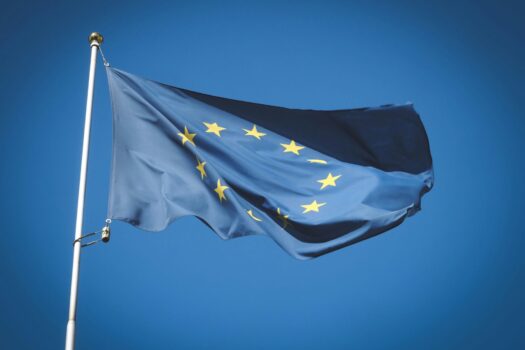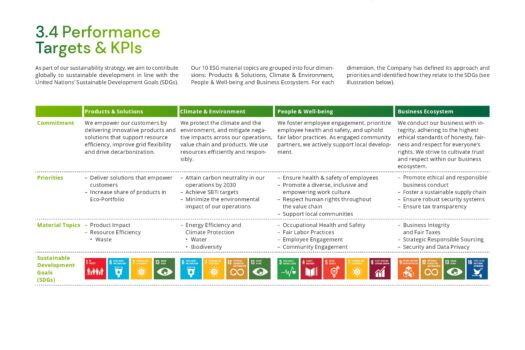From GRI to ESRS: Sustainserv supports the Liechtensteinische Landesbank in implementing the new reporting requirements.

Many companies are currently faced with the question of how existing GRI reporting can be meaningfully and efficiently converted into ESRS-compliant reporting – especially where reporting structures already exist but now need to be significantly expanded in terms of form and content. Sustainserv has accompanied the Liechtensteinische Landesbank (LLB) on this journey.
The Challenge
As a major bank in the European Economic Area, the LLB has been legally obliged to publish a sustainability report in accordance with the ESRS standards since the 2024 financial year. As a long-standing GRI reporter, the LLB had a solid basis, but the ESRS standard is significantly more demanding in terms of scope, depth and formal requirements. At the start of the project, the financial sector still largely lacked practical role models, which made the challenge even greater.
Goal
The LLB can look back on over 160 years of history. Sustainability is deeply rooted in its DNA. The new report should therefore do justice to the regulatory depth of the ESRS and also be easy to read and accessible for internal and external stakeholders – including the main shareholder, the Principality of Liechtenstein. One thing was clear: the aim was not to produce an overambitious report, but rather a well-founded, pragmatic initial report with a clear focus on the legal requirements.
What is CSRD / ESRS?
The Corporate Sustainability Reporting Directive (CSRD) obliges companies in the EU and EEA to report on environmental, social and governance issues in a comprehensive and standardized manner. The European Sustainability Reporting Standards (ESRS) specify these requirements. In future, companies will have to report on material ESG issues in a structured manner in accordance with these standards.
In February 2025, the European Commission proposed a series of simplifications for affected companies with the so-called “Omnibus” package. The aim is to reduce the administrative burden, particularly for SMEs. The changes are currently in the legislative process.
Our Approach
For many years, LLB has reported in accordance with the GRI standards with the support of Sustainserv and was therefore able to draw on established structures, processes and content. This setup served as a strategic “feeder” to fulfill the new, much more detailed requirements according to ESRS. Sustainserv pursued an integrated approach: the existing GRI reporting was not simply adopted, but systematically checked for its compatibility with the ESRS – both in terms of content and structure.
- Materiality analysis: The LLB had already carried out an ESRS-compliant materiality analysis. Its results – four material topics – formed the starting point for the report content.
- Concept & structure: In close coordination with the LLB, a report concept was developed that follows the logic of the ESRS, but at the same time remains reader-friendly. Bank-specific topics, such as the econo-mic role as a regional employer, were also integrated in a meaningful way through targeted structural considerations.
- Information preparation: The content was collected using targeted questionnaires, which were pre-structured by Sustainserv based on the existing GRI data. A key task was to translate the technically demanding ESRS requirements into comprehensible questions – a process that not only generated reporting information, but also built up internal knowledge and a shared understanding of objectives across the bank.
- Text creation & finalization: Sustainserv converted the content into easy-to-read report texts and ensured a structured assignment to the ESRS requirements. In addition, a tabular ESRS referencing was created, as required by the standards. The content in accordance with the TCFD was also integrated into the “Climate protection” chapter (ESRS E1) in line with the four TCFD core areas and clearly referenced.
Results
The LLB’s first ESRS report shows: Even if the requirements are extensive, a targeted start with the right partners can succeed. The efficient transition from GRI to ESRS is not only possible, but also offers the opportunity to identify existing processes and data gaps and strategically develop them further.
“With this report, we have not only fulfilled the legal requirements, but have also created a solid basis for further professionalizing sustainability reporting in the coming years.”
Cyrill Sele, Head of Group Corporate Communications at Liechtensteinische Landesbank AG
The internal implementation was also a learning process: the information queries, which were directed at all relevant departments, not only revealed content, but also contributed to raising awareness across the company. The structured translation of the ESRS requirements into understandable language created a common understanding of objectives, roles and content throughout the bank – an important prerequisite for long-term success in sustainability reporting.
In the course of preparing the report, initial gaps also became apparent – for example in the definition of targets or individual quantitative metrics. Such findings are a key added value of the first ESRS report: they reveal where there is still potential for development and make it possible to further sharpen sustainability aspects in a targeted manner in subsequent years.
The report is an example of how the transition from GRI to ESRS can succeed – not as a radical system change, but as a further development on a proven foundation, implemented pragmatically and used strategically.
Get in touch. We are happy to tell you more about it.






